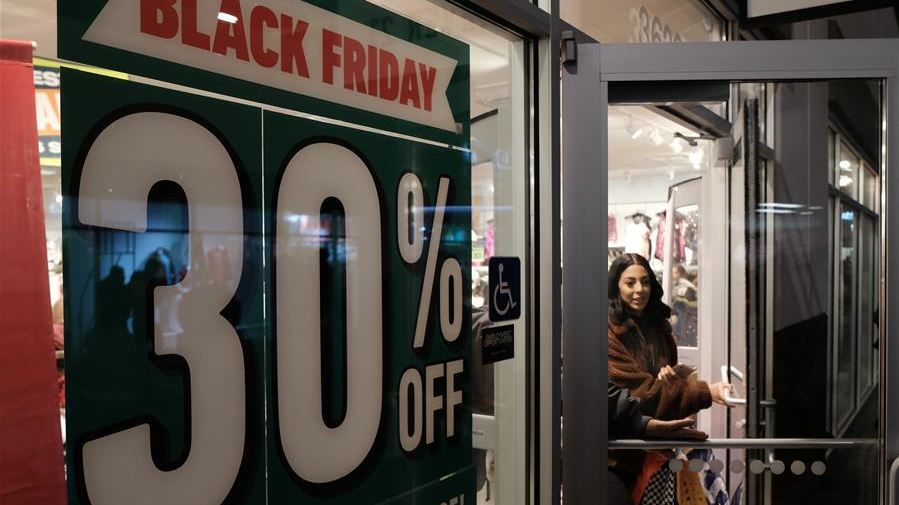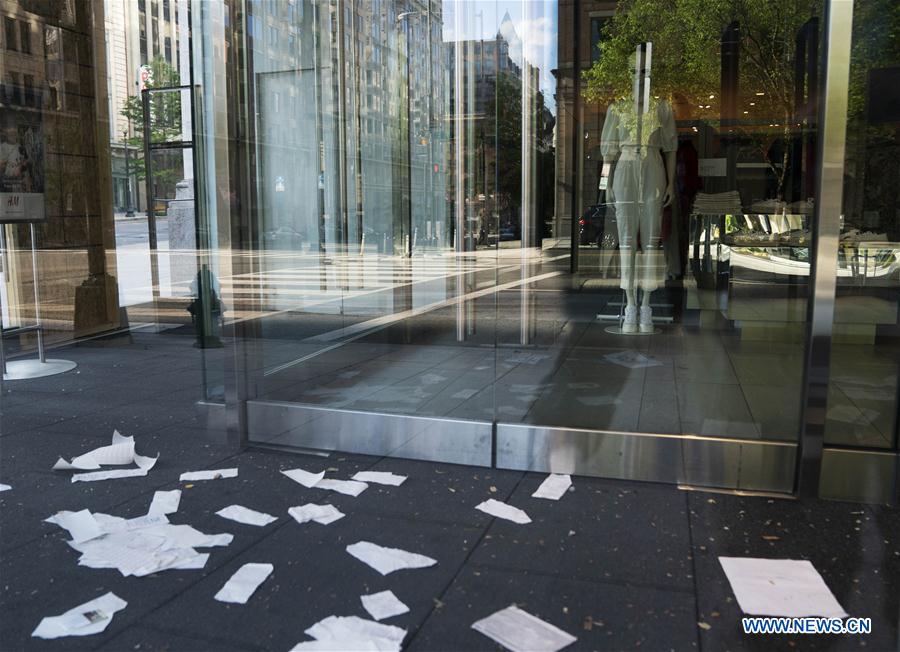
A woman shops at an outlet in San Francisco, the U.S., November 28, 2019. /Xinhua
A woman shops at an outlet in San Francisco, the U.S., November 28, 2019. /Xinhua
Editor's note: Bradley Blankenship is a Prague-based American journalist, political analyst and freelance reporter. The article reflects the author's opinions, and not necessarily the views of CGTN.
The United States is experiencing another serious wave of COVID-19 on par with, or perhaps even exceeding, the scale of the first wave that hit in the spring. After a rapid reopening strategy pushed by the administration of President Donald Trump to reawaken what he described as "the greatest economy in the world," the economic recovery picked up quicker than expected, but then started to slow down and is now falling again as cases and deaths soar.
Weekly jobless claims, based on the number of Americans who applied for state unemployment benefits, from the week ending November 21 totaled a seasonally adjusted 778,000 – well exceeding analysts' predictions and hitting a five-week high. It's clear that hiring has taken a hit from the uncontrolled spread of the virus, and new restrictions and lockdowns will put a freeze on much economic activity.
The numbers on this issue also paint another important picture: many people who are already on unemployment benefits are simply unable to find new work. According to data from November 14, state-provided benefit claims have declined to a pandemic low, but federal claims are rising – tripling since August. It means that people have exhausted temporary state-level benefits and are counting on federal aid provided through the CARES act.
That federal aid is set to expire on December 26 and was already reduced from 600 U.S. dollars per week starting July 31 to 400 dollars (the federal government covers 300, states already struggling to contribute an additional 100). Taken altogether, we see several things: the economic recovery is clearly reversing; jobs are being lost at a zooming pace; permanent joblessness is also increasing, and workers that have already taken a cut to their unemployment benefits are about to lose them.
Many, including the administration, have pointed to consumer spending as a major driver for the U.S. economy. In their conception, the economy should remain open in order for people to continue spending, and this, they say, will pull America out of its economic slump.
This holiday season, Black Friday and Cyber Monday, in particular, will be a good barometer for how true this turns out to be.
After all, the holiday season is huge for retailers – and many major American retailers are on the verge of bankruptcy and making huge cuts across the board. Because of this, many of them are doing everything they can to attract customers, such as extending their events (some started their deals in October) to overcome logistical issues caused by the pandemic.

A temporarily closed clothing store in Washington D.C., the U.S., May 7, 2020. /Xinhua
A temporarily closed clothing store in Washington D.C., the U.S., May 7, 2020. /Xinhua
Since 2016, sales during Black Friday have consistently increased by over 20 percent year-on-year, and according to data tracked by Adobe Analytics, this has moved more and more online. Last year's Black Friday saw a 20 percent year-on-year increase, edging out to about 11.9 billion dollars in sales. This year, according to a prediction by BlackFriday.com from the middle of October, sales are predicted to reach 11 billion dollars – a 7.5 percent drop.
With the ever-increasing size of internet shopping, Cyber Monday has seen remarkable growth over the years and this year is also expected to see some growth. According to the same site mentioned before, however, this growth will likely be much smaller – only a projected six percent increase in sales volume year-on-year.
Both of these projections already spell trouble for major retailers, but they were made even before the second wave of coronavirus hit the country in full force and put the brakes on the economy. The projections were also made before the 2020 presidential election, which meant that there might have been some hope for a new round of government stimulus – but now that has certainly passed.
With the coronavirus wreaking havoc across the country, more people losing their jobs, more permanent joblessness and the reality of no new stimulus until at least February, the figures will probably be much, much worse.
As has been the case before, there is reason to believe that Americans will chase bargains more when strapped for cash. After all, buying something you know you'll buy anyways when prices are low would make sense. But this is different; this is not a regular recession, but actually, millions of people falling into abject poverty, many experiencing food insecurity and facing homelessness at the end of the year. That is to say that the situation lacks any clear precedent.
This plunge in holiday spending will most likely mean the end of major American retailers who are in desperate need of a holiday miracle, not even to mention the many millions of small businesses who will suffer. It will also undoubtedly mean more market capitalization for major online retailers like Amazon and all that it entails, namely the deepening divide between the ultra-wealthy and the working class.
Because of this, Black Friday 2020 in America will probably set the tone for a dark holiday season and thoroughly dismiss the idea that consumer spending, rather than government aid, will support the country's economy.
(If you want to contribute and have specific expertise, please contact us at opinions@cgtn.com.)

